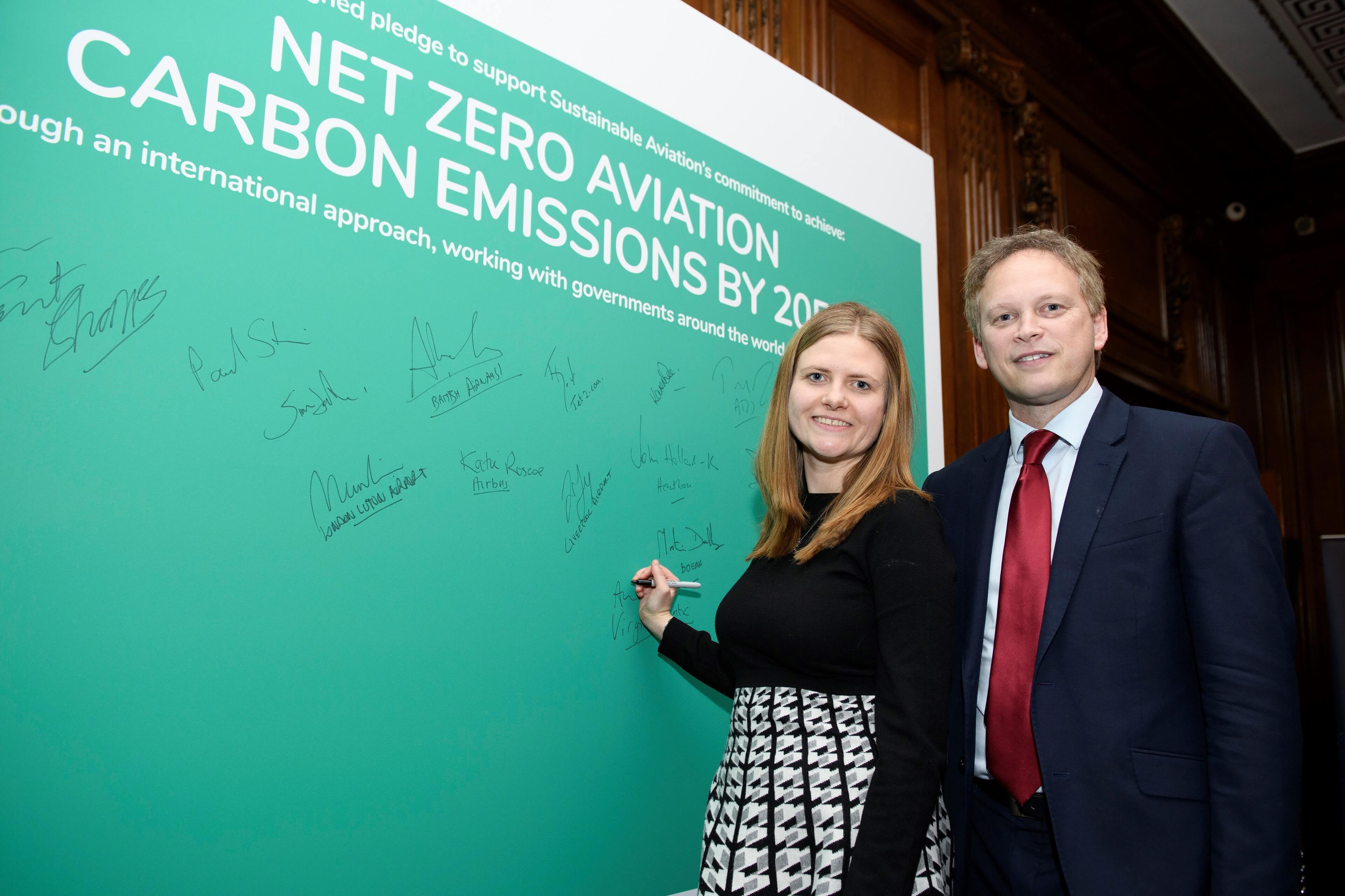Aviation is often targeted by green politicians and environmental activists for its contribution to global carbon dioxide emissions, which currently stands between 2 and 3%. While electric and hydrogen-powered aircraft are often cited as the long-term solution, it is thought that such technology will not arrive soon enough to have a meaningful impact.
So, to help with the decarbonization of human activity, companies such as Carbon Engineering, a Canadian-based clean energy company, focus on the large-scale removal of carbon dioxide from the air by utilizing Direct Air Capture technology to help meet net-zero goals through applications such as permanent carbon removal and the production of sustainable aviation fuels.
To mark Earth Day 2021, AeroTime News talks to Amy Ruddock, Vice President for Europe at Carbon Engineering. Ruddock served as Vice-President of Corporate Development and Sustainability at Virgin Atlantic before joining Carbon Engineering, where she is responsible for promoting innovative technology in a bid to drive the decarbonization of the aviation industry.
A lot of attention has previously focused on carbon capture at the source and from the scrubbers and filters on the flue-gas stacks of harmful industries. But this technology can only be applied to large static emitters and discards numerous smaller polluters like aircraft.
Ruddock says: “Mounting direct air capture on the back of the plane, like a tailpipe extractor, probably isn’t going to work physically [and will hinder] its ability to take off.”
Direct air capture is the process of capturing CO2 directly from the air. It differs from other carbon capture methods, because it captures CO2 from the ambient air, rather than at source – for example from industrial flues.
“Wherever carbon is emitted, it is quickly dispersed across the atmosphere,’ says Ruddock. “Direct air capture allows you to remove that carbon from anywhere, and where you pick is the most favorable location to run a plant.”
The technological solution developed by Carbon Engineering involves extracting the carbon dioxide from the air and, through a series of chemical processes, producing a concentrated stream of pure carbon dioxide. The chemical elements used in the process (potash and lime) are recycled in a closed loop that repeats endlessly, minimizing waste. The product, which is concentrated carbon dioxide, can then either be sequestered underground into geological formations or turned into transportation fuel.
“The latter is a more circular economy,” explains Ruddock. “You are producing transportation fuels that result in CO2 circling around the atmosphere, rather than putting more fossil fuel into the atmosphere.”
A short to medium-term carbon offsetting solution for aviation
Aviation is turning towards more sustainable solutions, including electric and hydrogen power. In the short to medium-term, such innovations might turn into a profitable venture for short-haul innovation. But it will likely take some time before a proven technology allows for zero emission long-haul aviation to be possible.
In the meantime, solutions like synthetic fuels and direct air capture can lessen the environmental impact of the aviation industry.
Ruddock explains: “To get to net zero means that for every molecule that is taken from the geosphere to the atmosphere, you need to move one from the atmosphere to the geosphere. Part of our portfolio of decarbonization will be biological solutions which lock carbon in the biosphere ꟷ trees are absolutely fantastic and need to be part of the portfolio, but they will last for 100 years and only start sequestering when they are about 20 years old. You then need to replant that tree again and again in order to avoid the carbon dioxide going back to the atmosphere.
“Permanent removal like direct air capture, like bioenergy with carbon capture and storage, and mineralization, capture it for 10,000 years or longer. So, you need to think about your portfolio over time moving towards those permanent removals.
She adds: “You might start today with 10% of your portfolio doing permanent removals, then, as you get towards 2050, for any offsets that you need to still do, you should be at 100%.”
The use of direct air capture is constrained by two parameters. The first one is a business model to support its deployment, the second is a sufficient source of sustainable energy.
“If we’re talking about sequestering underground, then you’d ideally locate somewhere that has those geological formations,” says Ruddock. “It costs a lot to transport gaseous solutions.”
When it comes to reusing the concentrated carbon dioxide, Carbon Engineering is focusing on the largest markets. For example, the agricultural market of greenhouses with a carbon-enriched atmosphere provides some offtake but is dwarfed by transportation fuels.
Ruddock says: “With Carbon Engineering, we are focused on making climate-relevant scale plants, so each of our plants is on the megaton scale. That tends to be a lot more than a single greenhouse or a group of greenhouses can off-take in a year. So, it really is looking for those bigger markets to scale up very quickly.”
Is sustainable aviation fuel and direct air capture in competition?
For Ruddock, it’s not a case of either-or, but synergy between several solutions that will eventually bring aviation to complete and sustainable decarbonization.
She says: “Sustainable aviation fuels produced by biological sources will get increasingly expensive as feedstock runs out, meaning that direct air capture will look even cheaper in comparison. But there are co-benefits with sustainable fuels. We’ve been talking about carbon dioxide and sustainable fuels – they are also cleaner burning, so fewer sulfur oxides, fewer nitric oxides, and research is starting to show fewer contrails.
“So, there are lots of reasons why you’d want sustainable aviation fuels. To have the optimum pathway that balances those benefits and the costs, you likely want to pair them with direct air capture.”
Ruddock welcomes the efforts of governments, airlines, manufacturers and fuel suppliers in driving the industry towards decarbonization.
She says: “I look to the example of Europe. There are clear aviation decarbonization roadmaps that have been produced by industry groups. Then, it’s a case of starting to act on those roadmaps. Jet Zero Council in the UK is a good example of public-private partnership looking at that very question.”
In June 2020, the British government launched the Jet Zero Council, a partnership between industry and government to bring together ministers and chief executive officer-level stakeholders, with the aim of delivering zero-emission transatlantic flights by 2025, through the funded development of new technologies to cut aviation emissions.
However, one of the difficulties that such solutions may encounter is defined by Ruddock as ‘international distortion’. This is where criteria imposed on carriers in a certain country could lead them to relocate their business elsewhere or re-route through other hubs.
Consequently, any agreements regarding sustainability should involve regional level at least, ideally international, but it’s a balance between avoiding distortion and bringing about solutions on a timescale the world needs.


